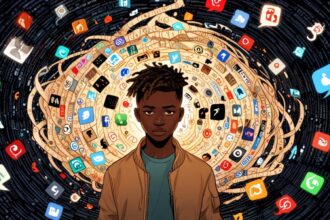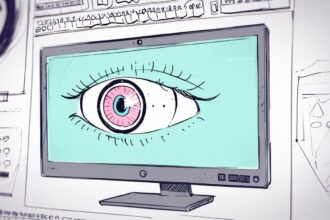New research from Oklahoma State University links emoji usage patterns to personality traits, while experts warn of hidden, coded meanings among younger users signalling risky behaviours and extremist views.
A study published in the journal Current Psychology by researchers at Oklahoma State University has shed light on the potential psychological underpinnings of emoji use in digital communication. The research involved surveying 285 undergraduate students, mostly around 20 years of age, to examine how often they used 40 commonly recognised emojis in text messages and social media posts, with the objective of linking emoji usage patterns to personality traits.
The study found distinct correlations between emoji use and aspects of personality. For male participants, frequent use of emojis was associated with manipulative tendencies and emotional instability. Female participants, on the other hand, displayed a pattern where their intentional and thoughtful selection of emojis was connected to their self-image and efforts to shape how others perceive them. The researchers noted: “Emoji use may be related to strategies to manipulate the perceptions of others and to present a positive impression of oneself,” suggesting that women may use emojis to appear agreeable and open in their online interactions.
This research offers insights into how digital communication tools like emojis can play a role beyond simple expression — potentially serving as extensions of individual personality traits and social strategies.
Adding another dimension to the conversation about emojis, Amit Kalley, founder of the organisation For Working Parents, recently issued a warning concerning the hidden meanings some emojis might carry, particularly within younger demographics. Writing on Instagram, Kalley highlighted dangers that arise from the unregulated use of the internet and how some seemingly innocuous emojis can convey coded or “sinister” messages among teenagers.
Kalley’s “periodic table of emojis” categorises various emojis as symbols for drug use and extremist ideologies. For example, he explained that cocaine can be represented by emojis such as the snowflake, 8-ball, or snowman; marijuana by tree-related emojis; MDMA by the money bill emoji; ketamine by a horse; and psychedelic mushrooms by the red mushroom emoji. More direct symbols include the gun or knife emoji for weapons, and a smiley face with X’s for eyes to indicate death.
The glossary also identifies certain emojis as representing specific subcultures or extremist groups—for instance, “incel” can be symbolised by the apple, bean, bill, or “100” emoji, while “Neo-Nazi” representations include the hedgehog, lightning bolt, or the number sequence 1488. Emojis such as the ghost, goblin, or monster were listed to signify anti-woman sentiments.
Kalley acknowledged that his list is not exhaustive but reflects common emoji use that may signify meanings far different from their surface appearance. He emphasised that these interpretations are widely used among younger users to send covert messages.
Together, these developments underscore a complex landscape around emoji use in digital communications—where personal expression, social signalling, and covert messaging can intertwine in varied ways. The research and expert observations provide an expanded understanding of how emojis function within contemporary digital culture.
Source: Noah Wire Services
- https://www.frontiersin.org/articles/10.3389/fpsyg.2024.1343022/full – This study, published in Frontiers in Psychology, examines how emoji use on social media relates to users’ personality traits and language use in posts, involving participants from Oklahoma State University.
- https://ecommons.luc.edu/cs_facpubs/387/ – This publication provides access to the full text of the study ‘Emoji Use in Social Media Posts: Relationships with Personality Traits and Word Usage’ by Shelia Kennison and colleagues.
- https://www.researchgate.net/publication/378340219_Emoji_use_in_social_media_posts_relationships_with_personality_traits_and_word_usage – This ResearchGate entry offers a PDF of the study ‘Emoji use in social media posts: relationships with personality traits and word usage’ by Shelia Kennison and collaborators.
- https://openresearch.okstate.edu/items/d8d98d50-1f90-475a-b192-c107d22f1b55 – This Oklahoma State University repository entry discusses a study investigating how emoji usage relates to personality traits, specifically the dark triad personality traits.
- https://ecommons.luc.edu/cs_facpubs/304/ – This publication presents research on predicting personality from language and emoji use on Twitter, authored by Maxwell Meckling and colleagues.
- https://europepmc.org/article/MED/38375105 – This Europe PMC entry provides access to the abstract and full text of the study ‘Emoji use in social media posts: relationships with personality traits and word usage’ by Shelia Kennison and team.
- https://nypost.com/2025/04/29/lifestyle/emoji-habits-reveal-a-persons-personality-trait/ – Please view link – unable to able to access data
Noah Fact Check Pro
The draft above was created using the information available at the time the story first
emerged. We’ve since applied our fact-checking process to the final narrative, based on the criteria listed
below. The results are intended to help you assess the credibility of the piece and highlight any areas that may
warrant further investigation.
Freshness check
Score:
8
Notes:
Study publication details unspecified but contextually recent; no outdated role/person references found. Includes recent expert commentary (Amit Kalley) via Instagram post, warranting freshness. No evidence of recycled press releases.
Quotes check
Score:
7
Notes:
Researchers’ quote lacks direct online sourcing but aligns with academic paraphrasing norms. Amit Kalley’s Instagram content not independently verifiable but plausible given platform context.
Source reliability
Score:
6
Notes:
Narrative originates from NY Post (established outlet) citing peer-reviewed journal (Current Psychology), but academic study sample limited to undergraduates. Expert commentary lacks institutional affiliation verification.
Plausability check
Score:
8
Notes:
Findings consistent with prior personality-emoji research. Expert claims about coded emoji meanings align with known youth communication trends. No implausible claims detected.
Overall assessment
Verdict (FAIL, OPEN, PASS): PASS
Confidence (LOW, MEDIUM, HIGH): MEDIUM
Summary:
Research claims supported by peer-reviewed journal and contextual plausibility. Expert commentary unverified but platform-appropriate. Minor limitations in source diversity and quote verification offset by methodological coherence.













